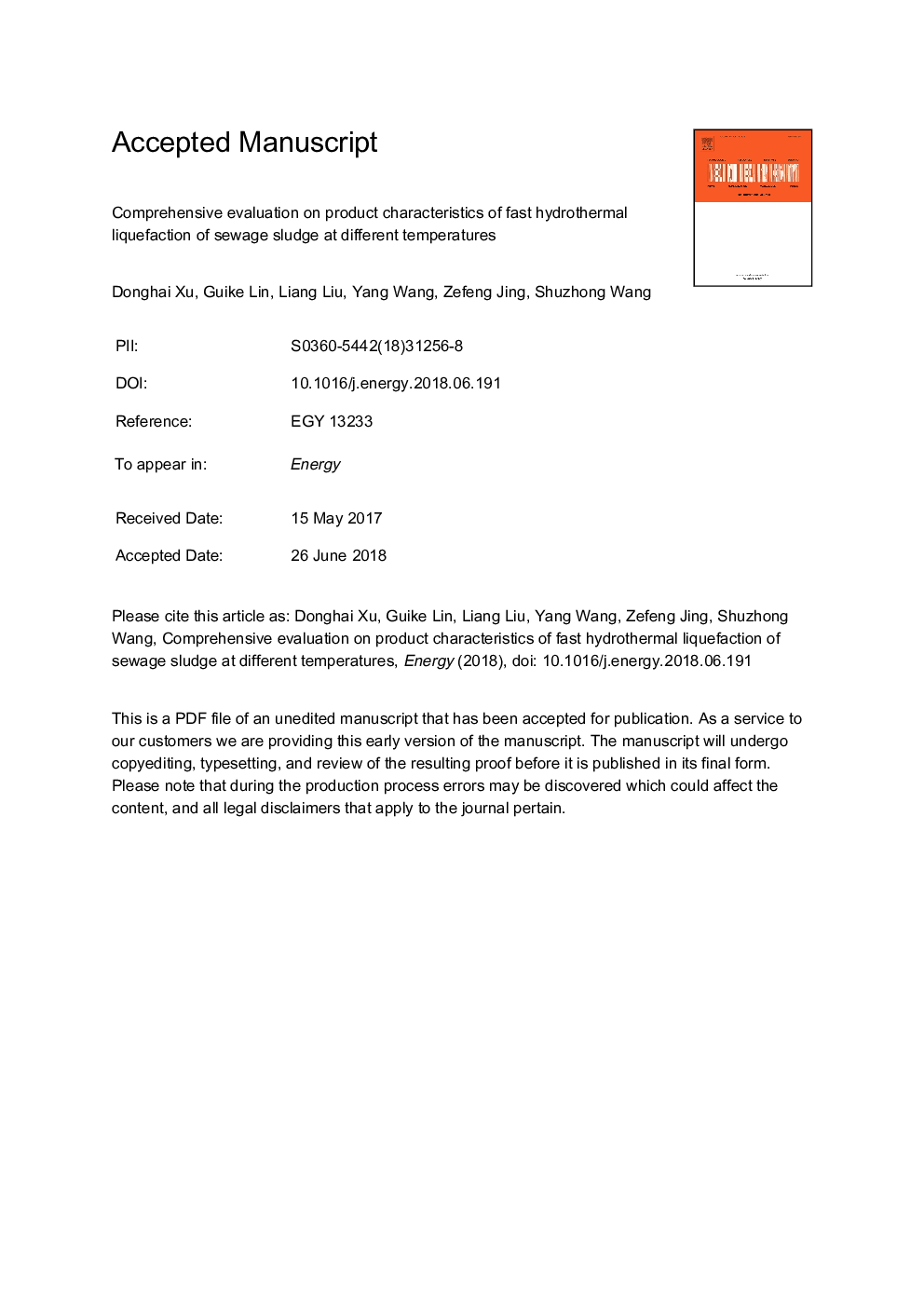| Article ID | Journal | Published Year | Pages | File Type |
|---|---|---|---|---|
| 8071085 | Energy | 2018 | 27 Pages |
Abstract
Hydrothermal liquefaction (HTL) can chemically convert sewage sludge (SS) into a crude bio-oil (biocrude) and other by-products. This work systematically elucidates how the yields and compositions of different products (e.g., gases, biocrude and solids) vary with temperature (260-350â¯Â°C) in SS HTL with 10â¯min of residence time. The results show that increasing temperature improved the biocrude quality and the gas yield, declined the water-soluble substance yield, the solid yield, and the TOC (total organic carbon) content in aqueous phase, while the biocrude yield and the NH3-N (ammonia nitrogen) content in the aqueous phase first raised and then decreased, and reached the maximum values at 340â¯Â°C. After SS HTL at 340â¯Â°C, light biocrude, light solids, water-soluble organic matters accounted for about 54.4, 50.5, 88.9â¯wt% of total biocrude, solids and water-soluble substances, respectively. The N and S contents in the light biocrude almost halved compared with those in the heavy biocrude. The light solids contained a higher C content but lower Al, Si, Ca and Fe contents than did the heavy solids. >93.0â¯wt% of Cu, Zn and Cr remained in the solids in contrast to 0.5-1.0â¯wt% in the aqueous phase and 0.2-4.7â¯wt% in the biocrude.
Related Topics
Physical Sciences and Engineering
Energy
Energy (General)
Authors
Donghai Xu, Guike Lin, Liang Liu, Yang Wang, Zefeng Jing, Shuzhong Wang,
